
Porto’s campaign (360º image)
St Eugénio, Igreja dos Congregados, Porto
Context
From the rediscovery of the coemeterium Jordanorum on May 31, 1578, until Pope Leo XII’s prohibition in 1881, the bones of men, women, and children – known as corpi santi (holy bodies) or catacomb saints – were exhumed from Rome’s subterranean cemeteries and widely distributed across Europe and the Americas, including Portugal. These early Christian martyrs were intended to promote and strengthen religious devotion in churches, convents, monasteries, and private chapels while also serving as symbols of power and influence for those who commissioned them. Initially, the corpi santi were transported in wooden boxes (capsulae ligneae), accompanied by legal documentation (authentica) and red wax seals, serving as attestations of their authenticity.
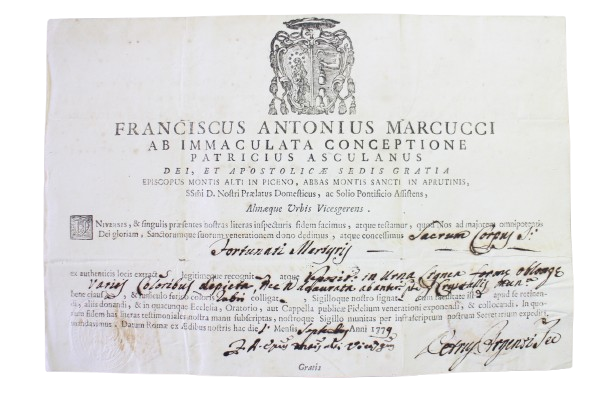
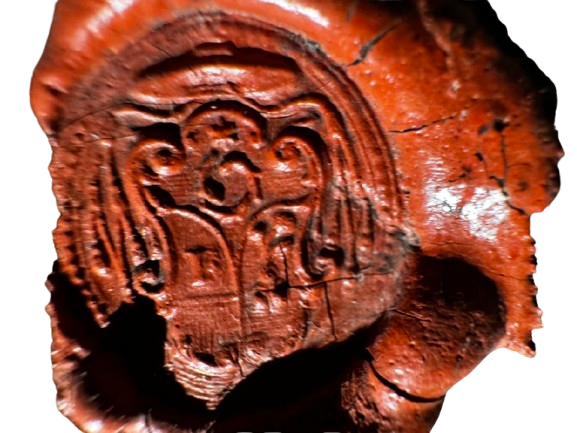
Unlike traditional medieval reliquaries crafted of wood or metal, these modern receptacles sought to simulate the physical bodies of the martyrs. The creation of these devotional artefacts began in the late 17th century and continued until the mid-19th century. Likely produced in convents and monasteries or by artisans skilled in anatomical accuracy and moulding techniques, these figures were often made under the guidance of medical professionals. Constructed from materials like fabric, paper, plaster, or wax, they were mounted on metallic structures and adorned with richly decorated garments. Typically depicted in lateral or recumbent positions, these figures also featured symbols of their holiness and martyrdom.
However, from the 19th century onwards, enthusiasm and affective piety for these relics and reliquaries waned. Archaeological research contributed to the general discrediting of the authenticity of corpi santi as early Christian martyrs due to a lack of supporting evidence. One factor in this scepticism was the blood vessel (vas sanguinis), once deemed definitive proof of martyrdom, along with the palm, as recognised by the Sacred Congregation of Indulgences and Sacred Relics (April 10, 1668). The secularisation of Church property during the Revolutionary Wars and the subsequent dechristianisation further diminished devotion. As popular veneration sharply declined, many simulacra were concealed or removed from sacred places, leading to their eventual obscurity. Over time, the official authentication documents accompanying these relics, along with their origins and historical significance, were lost.

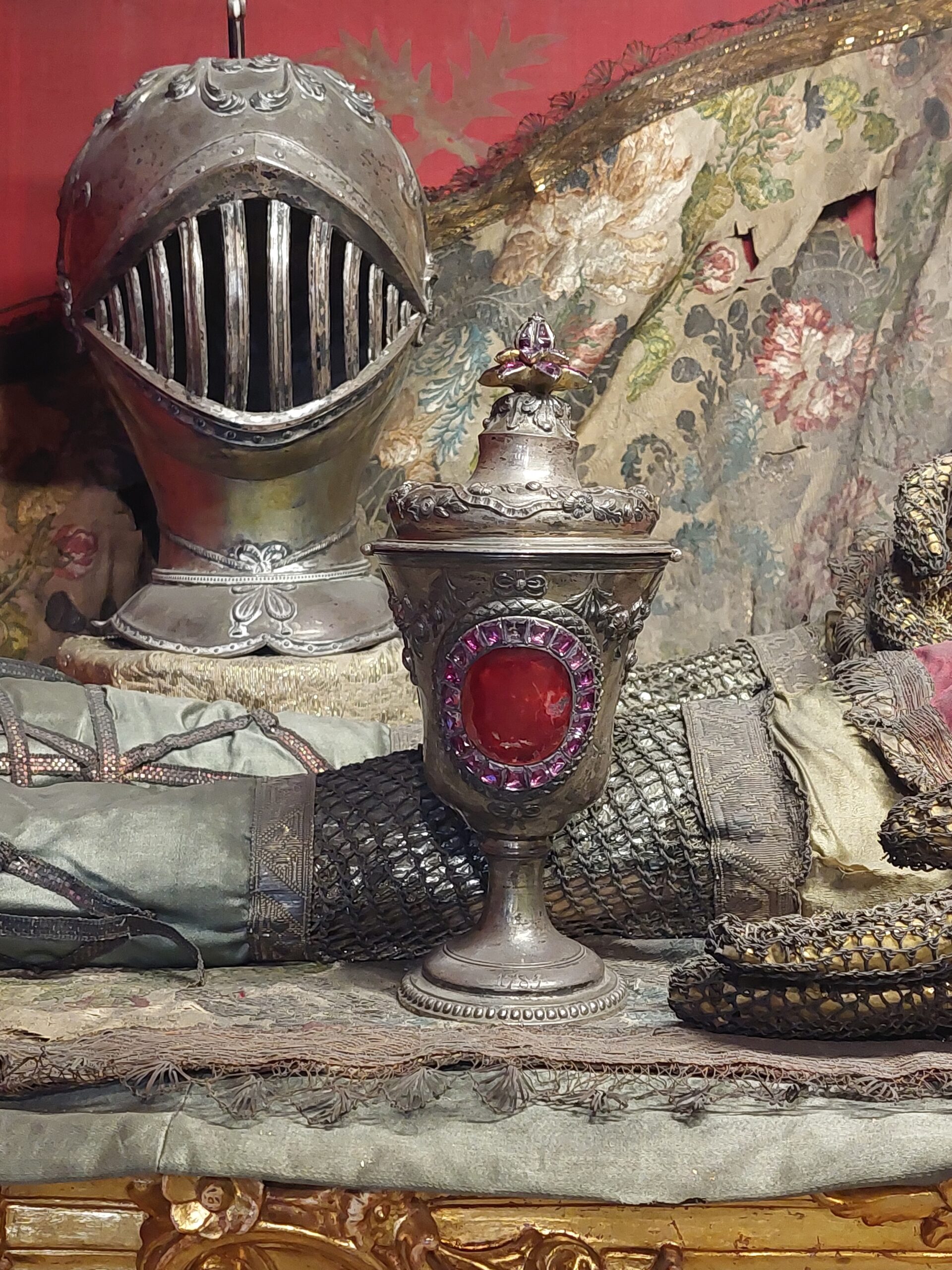
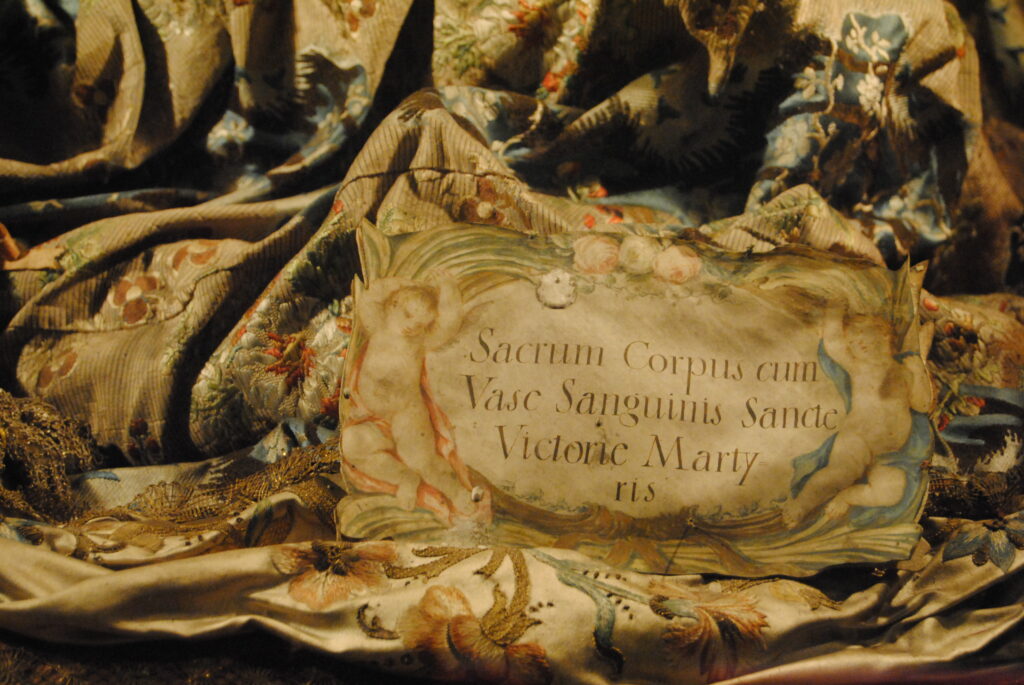
Project & Mission
The Holy Bodies | An Atlas of the Corpi Santi in Portugal project (DOI https://doi.org/10.54499/2022.01486.PTDC) is funded by the Foundation for Science and Technology and will run from March 2023 to March 2026.
The simulacra of catacomb martyrs are significant religious artefacts, noteworthy for their historical and religious context, as well as the diverse materials and complex production techniques involved in their creation. The urgency of studying these artefacts is heightened by the lack of national and international scientific literature, leading to imprecise interpretations of their significance and a potential irreversible loss of this religious heritage.


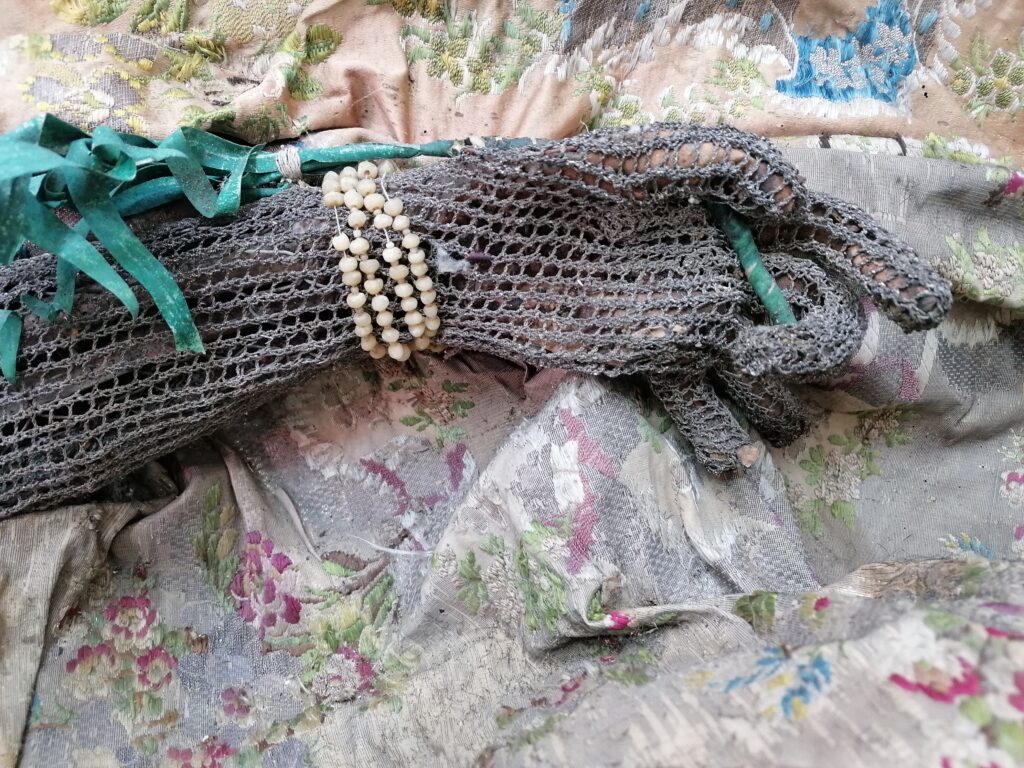
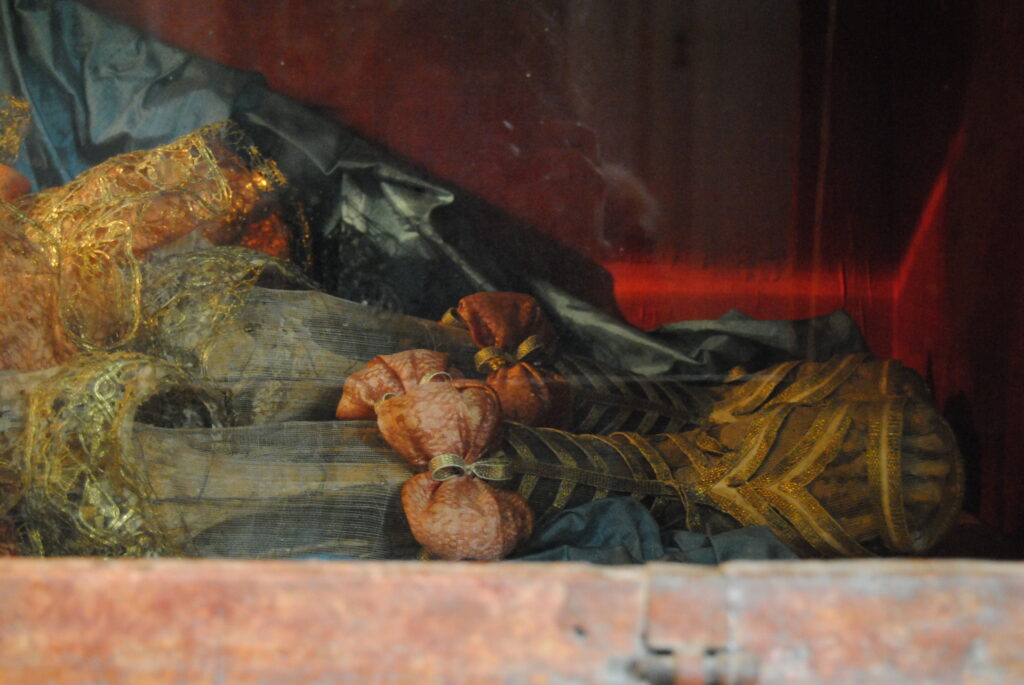
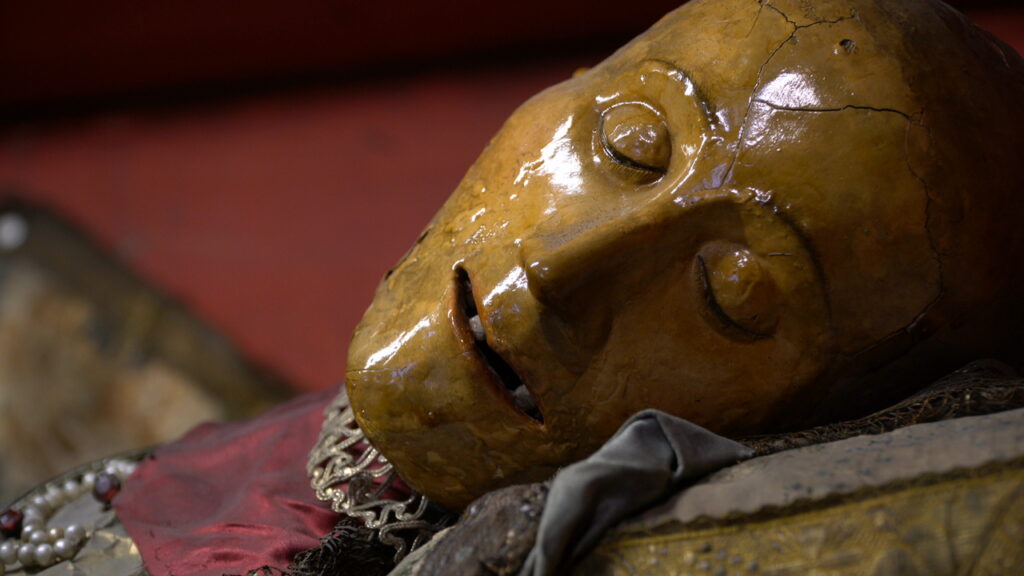
The Holy Bodies project aims to unveil the historical, artistic, and religious context of the corpi santi and their simulacra in Portugal. Its objectives include recognising, safeguarding, and enhancing these often-overlooked heritage artefacts while raising awareness among the general public, academics, and their owners. This will be accomplished by a specialised team of researchers, consultants, and advisors employing inter- and transdisciplinary approaches. Key actions planned to fulfil the project’s goals include:
- Research in national archives alongside the Apostolic Vatican Library, the Vatican Apostolic Archive and the archives of the Vicariate of Roma
- Continued development of the national inventory, initiated in 2017
- Documentation of relics and reliquaries using advanced digital photography, cutting-edge 3D scanning technologies, and immersive reality applications
- In-depth analysis of relics and reliquaries within the framework of Art History, Religious History, and Cult
- Material and technical examination of representative simulacra
- Establishment of tailored conservation and restoration protocols to assist and guide religious and cultural institutions
- Collaborative research with Italian scholars to contextualise national findings by comparing them with the Italian origins of most specimens found in Portugal
- Development a website linked to an online platform serving as a comprehensive database for corpi santi and simulacra in Portugal
- Outreach activities aimed at both specialised researchers and the general public


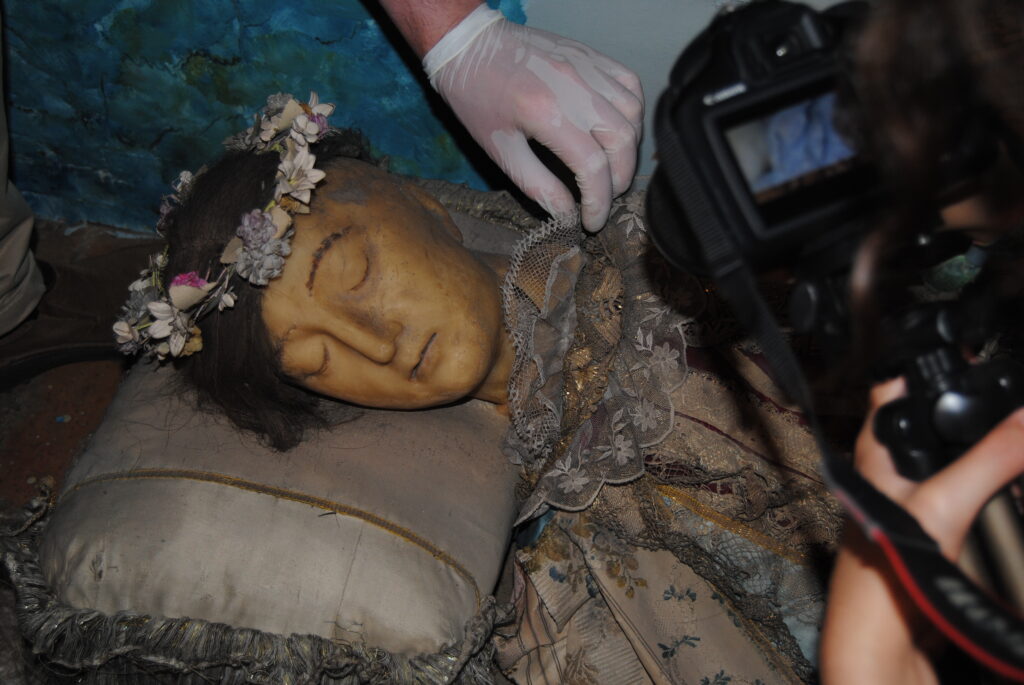
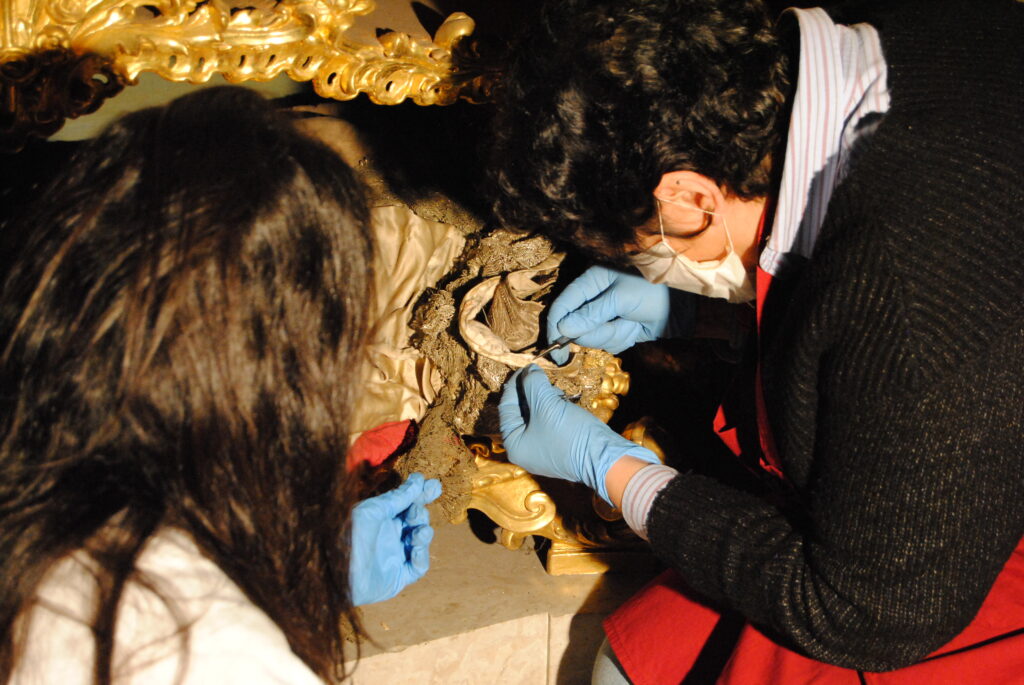
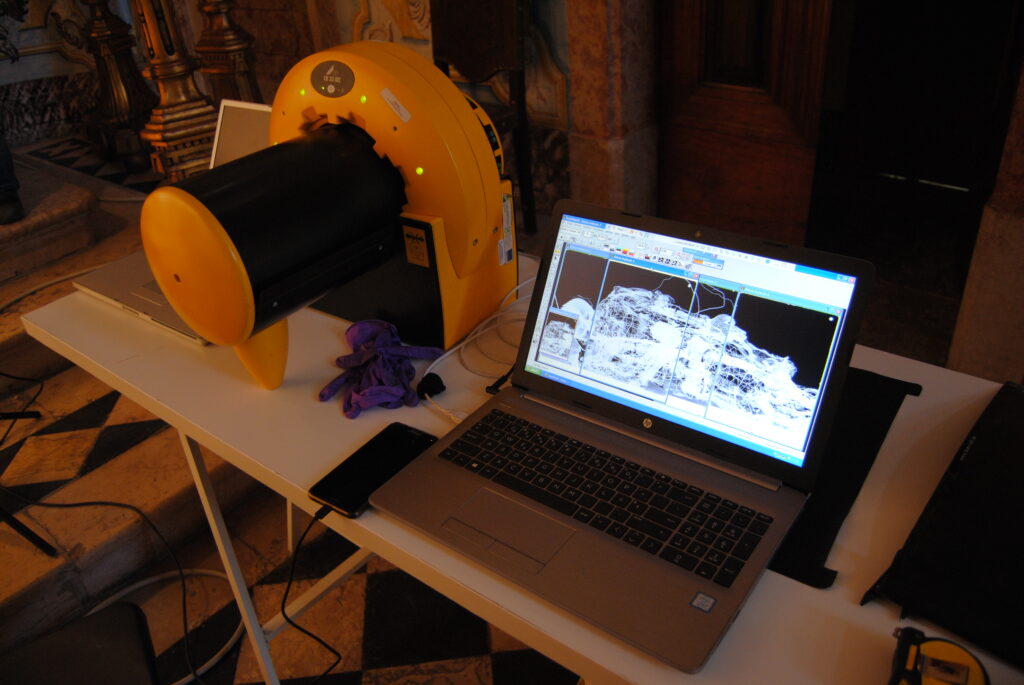
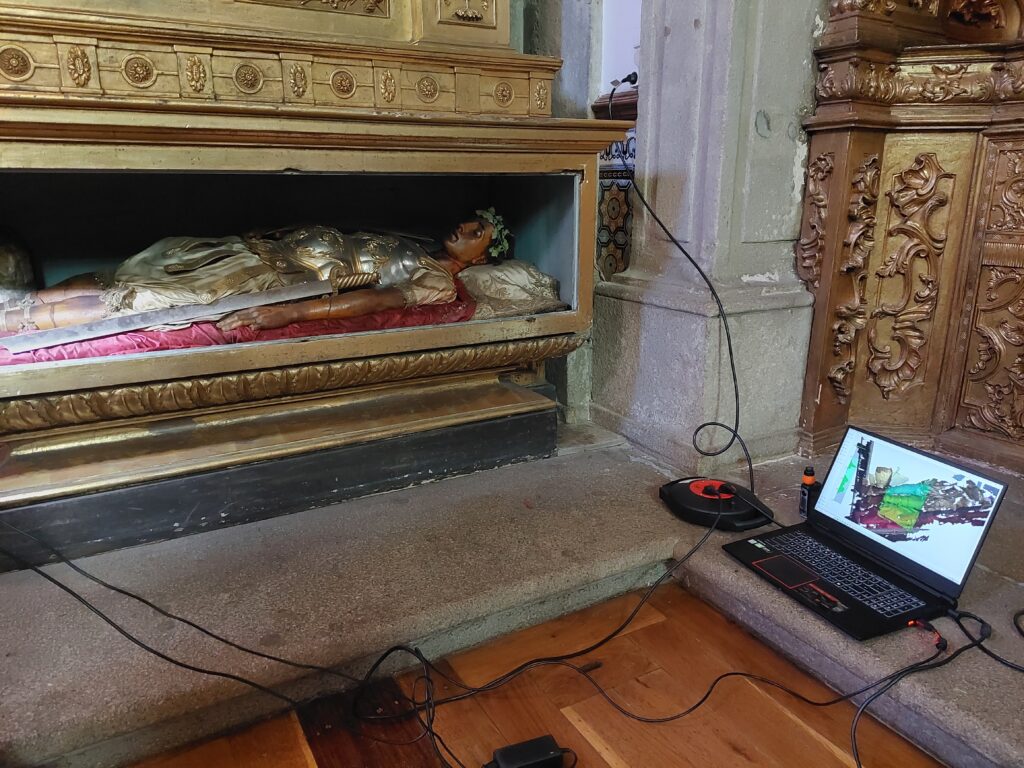
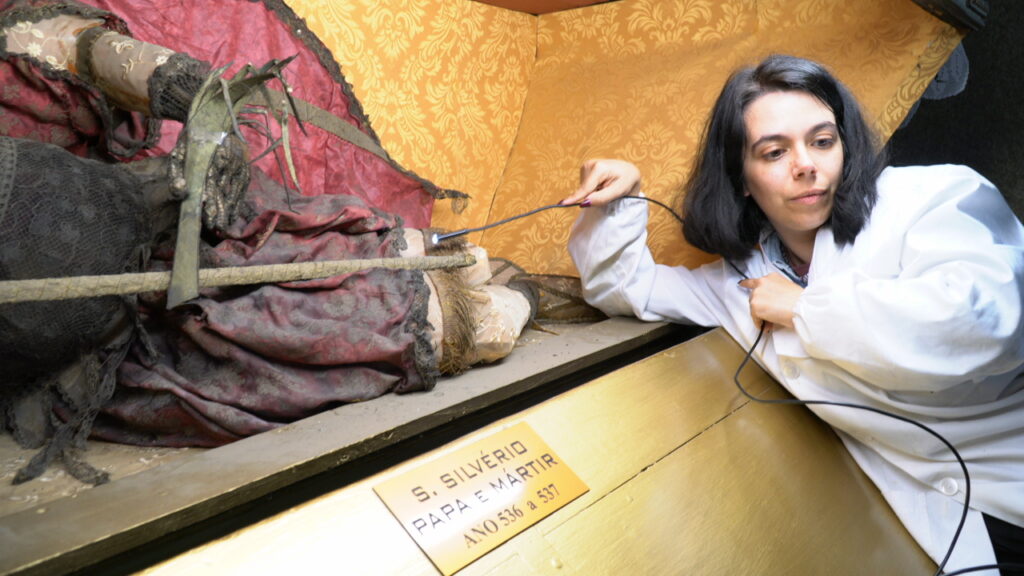
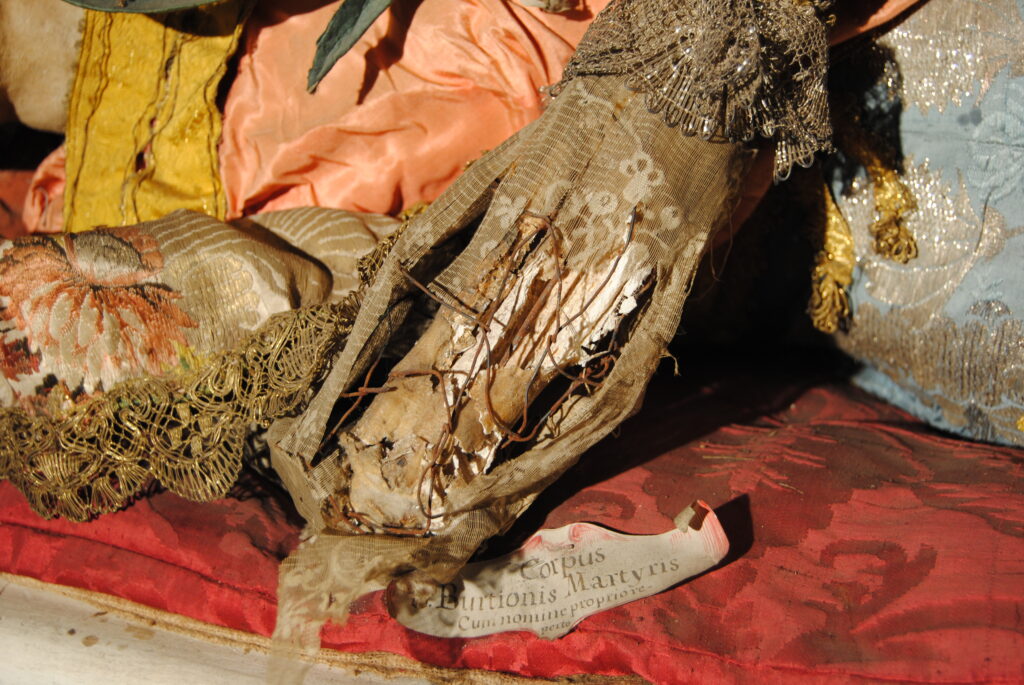

E-Mail
holybodies@uevora.pt | tasf@uevora.pt | evieira@ucp.pt
Address
Largo Marquês de Marialva, 8
7000-809 Évora
Portugal
Social Media
